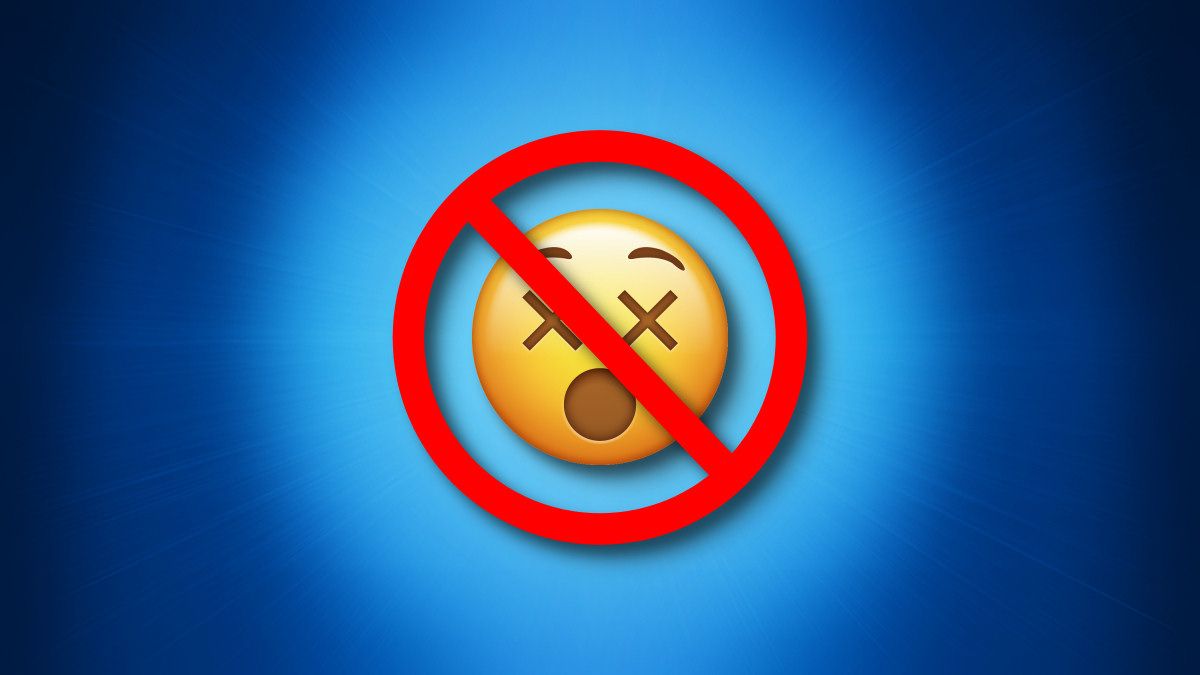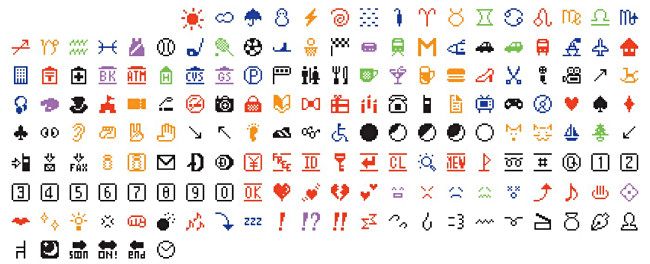Quick Links
Your smartphone is full of cute little pictures of faces, people, and objects. They can be fun---and legitimately useful---but there are currently over 3,600 of them. With more continuously added over time, we're changing the nature of emoji itself. When will it end?
Emoji Were Once Limited For a Reason
Originally, emoji were limited in detail and in number, allowing them to serve as pictograms that could depict a broad group of objects or ideas. Sure, the influential 176-entry set of emoji created by NTT DOCOMO in Japan for cell phones was constrained by technical limitations such as image resolution and storage space. But that limitation gave birth to their genius: By distilling visual expression down to 176 symbols, they were flexible enough to apply to many different situations and even adapt to local cultures in different ways.
Today, in 2022, we have over 3,600 emoji for very specific things in an international Unicode standard, including wine 🍷, cat faces with tears of joy 😹, elves 🧝, genies🧞, zombies 🧟♂️, beetles 🐞, french fries 🍟, bricks 🧱, and even amphora 🏺. The more specific and detailed emoji get, the more people realize that things are being left out, and some groups regularly petition to add new emoji to the set. Today, anyone can propose a new emoji, and if it meets certain criteria, it will be added to the standard.
Emoji Ambiguity is Now a Problem
With 3,633 emoji, ambiguity now becomes a curse 🙈. There are many emoji of a confusing or ambiguous nature whose meaning you might not understand, and even if you do, the person you're sending the emoji to might not. It's easier to create a set of meta rules about the cultural uses of a smaller set of emoji, such as an emoji sticking its tongue out (officially titled "face savoring delicious food") 😋 meaning "silly" or "joking." But if someone sends you an emoji of the Tokyo Tower 🗼in the middle of a conversation, what does it mean?
As emoji grow more numerous, their ability to be used in a general sense suffers. In a 2019 article in The Atlantic, Ian Bogost wrote, "Emoji are becoming more specific and less flexible as more icons appear." By adding more specific emoji, the existing emoji lose expressive power.
This is funny because the success of our written grammar comes from having a limited number of words that can express an unlimited number of ideas. In Introduction to Information Theory (1960), John R. Pierce wrote, "We cannot have a separate word for every distinct object and every distinct event; if we did we should forever be coining words, and communication would be impossible." He goes on to describe how the word "run" 🏃♂️ can apply to many different situations.
Interestingly, many emoji are currently used in this flexible way, with some emoji like "peach" 🍑 having a widely accepted, non-literal meaning. But what would happen to the meaning of the peach emoji if Unicode eventually added an emoji that literally represented that certain body part? The more specific the emoji get, the less powerful they become.
With the proliferation of emoji, we're witnessing the history of written language in reverse, where flexible grammar with a few elements (a 26-letter alphabet) is expanding back into a pictographic library full of literal representations of objects. The exact opposite happened in Sumeria about 5000 years ago, when pictograms representing literal objects 🐂 evolved into logographic writing systems ♉, which later became syllabic and alphabetic scripts 🔠 for more flexibility.
Another problem with modern emoji is that their appearance can differ between platforms. That can result in people interpreting them differently on each platform, adding further ambiguity to a conversation.
Emoji Are Hard to Find
With over 3,600 emoji, how do you find the one you need to use? You could spend probably 30 minutes browsing for just the right emoji, only to have its meaning mistaken by someone else. Or you could use a search function commonly build into operating systems such as iOS or Windows. Even then, sometimes you don't know what to search for.
Conversely, if someone sends you an emoji, you might not know what it is or what it's supposed to mean 😵, luckily, sites like Emojipedia can come in handy, but if you need a guide to understand emoji, doesn't that defeat the purpose entirely?
Improving Representation Is Still Good
Make no mistake, since the Unicode Consortium has embraced adding many specific emoji to the standard, additions to the emoji list that improve gender, cultural, and skin color representation are great additions. An appearance of a treasured cultural item 🥟 in the emoji standard is a powerful form of recognition that exists across smartphone keyboards worldwide. It can inspire cultural pride similar to seeing your country's team making an appearance on the world stage at the Olympics.
But emoji aren't entirely about broadening social inclusion. Last year, the Unicode Consortium announced 37 new emoji that include a troll, a piece of coral, and a disco ball. The standard has been growing dramatically in size over the past two decades---from 471 emoji in Apple's initial emoji set in 2008 to the 3,633 we have today.
The question then remains: How many emoji is enough? Will there eventually be 10,000 emoji? 20,000? Do we need an emoji for every object on earth 🌎, every species of animal 🐬, every type of food 🍇, every expression across every culture? Writing for Slate in 2018, Heather Schwedel said, "We don't need an emoji to represent every single word. That's why we have words."
But then again, maybe words are old news, and we're witnessing the birth of a brand new visual language? 🤷 No matter what happens, emoji are popular now and undoubtedly here to stay. What happens with emoji over the next few decades, and how our use of them evolves over time, will be very interesting to watch.



